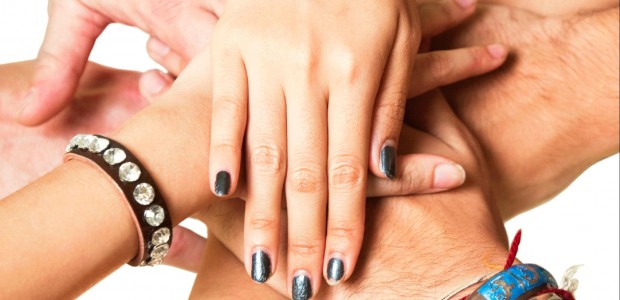If you’ve been to a nail salon before, then you’ll know that most have little ultraviolet lamps. These devices are used to dry nail polish more quickly, but could they be putting skin cells in your hands at risk? These small UV-lamps use the same rays as tanning beds, and we’ve seen how these can be hazardous in the long run.
The results of a new study suggest that regular exposure to these small UV-lamps can cause damage to the skin of the hands. The research team tested 17 separate lamps from different nail salons. Their calculations show that attributed risk varies greatly based on the particular machine, but skin cells could be damaged in as little as 10 visits.
What this means is that your risk would not be impacted that much unless you’re getting manicures several times a month. What is more concerning is the risk that manicurists could be putting themselves at if they are using these machines on a daily basis.
(Quick Fact: Did you know that the month of May is Melanoma and Skin Cancer Prevention Month?)
UV Rays and Skin Cancer Risk
Previous cancer studies have provided plenty of evidence showing how prolonged UV radiation exposure can lead skin cancer. These harmful rays are products of the lamps used for tanning and manicures, but they are also produced naturally by our sun. It’s why wearing sunscreen really can save your life.
Prior research raised questions over the long-term safety of using UV lamps in nail salons, but the results have been largely ignored due to the number of underlying flaws in the studies themselves.
“They didn’t actually go out and measure the nail lamps themselves and measure the UV radiation they’re exposed to,” explains Dr. Lyndsay Shipp, who was lead author for this study and a professor at Georgia Regents University.
Shipp’s research team made sure they did exactly that– measuring the UV-A rays produced by 17 different nail polish drying devices at 16 salons. These UV-A rays are known for aging the skin and causing wrinkles. These rays also break up DNA strands within the skin cells which can cause skin cancer. As we alluded to earlier, the lamps possessed different output capabilities, largely determined by their given wattages.
How Many Manicures is too Many?
The research team was able to estimate the average level of UV-A radiation exposure that was needed in order to damage the skin’s DNA. They landed on an average number of 11 visits for the lamps to deliver enough UV-A exposure to raise a person’s cancer risk.
You can see that the risk is fairly low for the average person, but this research team still thinks it wouldn’t be a bad idea to throw on some sunscreen as an extra precaution. Probably the most important consideration would be for the manicurists themselves, since they could be exposed to a much larger dose of UV-A rays.
Final Verdict: These UV Lamps Aren’t on as Hazardous as Tanning Beds
Experts like Dr. Alina Markova have chimed in following the release of these results. Dr. Markova wasn’t involved in this cancer study, but she notes that DNA damage isn’t a cancer sentence. “Just one risk factor of DNA damage doesn’t mean you’ll have a clinical outcome of skin cancer or photoaging,” she explained.
Dr. Markova works in the Department of Dermatology at Boston University and has studied the effects that these UV rays can have. She doesn’t believe that these small UV lamps pose much of a danger to the average customer at nail salons.
“While we’re starting to realize these UV nail lamps are relatively safe, we still need to realize that the artificial UV devices that are hazardous are tanning beds,” she said.
The lead author of the study, Dr. Shipp also believes that it would have to take many, many visits for these lamps to pose a risk on par with tanning beds. She even says that she plans to continue getting manicures herself.

